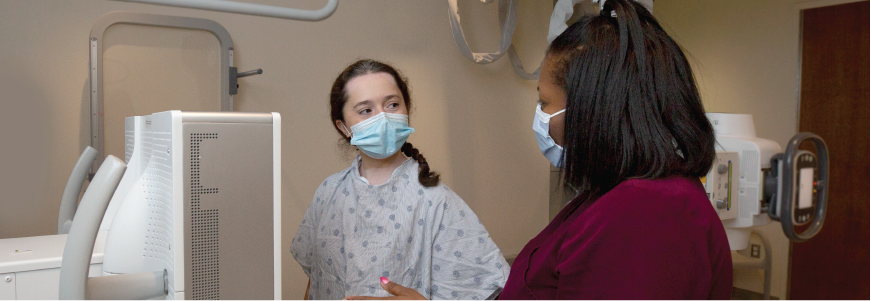Routine use of lead shields designed to protect the gonads during pelvic and abdominal x-rays is joining the list of outdated medical practices. This fall, Duke will launch a systemwide program called “Shed the Lead” to adapt to accumulating evidence that the shields do not provide the benefits once thought and can have some downsides.
The initiative to drop the shielding is part of a widespread movement to implement updated recommendations from the National Council on Radiation Protection and Measurements, says Donald P. Frush, MD, a Duke radiology professor who chaired the committee that authored the guideline.
“We do things much better than we did 50 or 60 years ago in terms of exposures. The technology has substantially advanced,” Frush says. The doses are much smaller than in the past—as much as 95% lower—and the gonads are at a much lower potential risk from the radiation exposure than previously thought, Frush says. In fact, gonads are not as sensitive to radiation as other parts of the abdomen—such as bone marrow, stomach, and colon—that are not shielded.
The shields can have the unintended consequences of increasing the overall exposure to unshielded regions and reducing diagnostic information, Frush says. Lead shields can block the automatic exposure sensors that are intended to shut off the x-ray exposure when they register the necessary dose received, resulting in a greater-than-intended dose to the surrounding, unshielded tissues.
In addition, the shields provide no protection against internal scatter of the x-rays, which accounts for a portion of the dose the gonads, especially ovaries, can receive. Finally, even when technologists carefully follow guidelines, the shields can be difficult to place correctly over the testes and ovaries, particularly in small children. They can end up covering parts of the x-ray examination that provide valuable diagnostic information.
Frush says that the change will require dialogue that includes education throughout the system, including for administrators, healthcare providers, and especially radiological technologists who routinely interact with patients.
Patients and their caregivers will need to be part of the educational dialogue, and technologists may face challenges in explaining the reasons for the changes in long-used shielding procedures. Information on recommended communication approaches will be a part of the rollout. Informed and shared decision-making between providers and patients will provide opportunities for exceptions when shielding is reasonable. To this end, the American Association of Physicists in Medicine has posted answers online to frequently asked questions for both healthcare professionals and patients.
“When we ‘shed the lead,’ we are following the latest evidence that continues to demonstrate our commitment to the highest quality and safest imaging care of our patients,” Frush says.
Article
Duke Radiology Prepares to ‘Shed the Lead’
New guideline changes gonad protection
Updated
September 30, 2022
Published
September 22, 2022
Image
